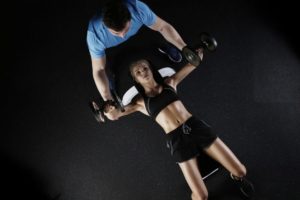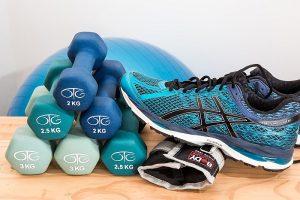Pro hockey players are some of the most physically fit athletes you’ll find out there these days. The need for speed, agility, stamina and physical strength that exists in the sport is nearly unmatched by any other except maybe for football. Because of this, these athletes need to exercise hard and do so using some somewhat unorthodox equipment that simulates their natural competitive environment. This means that they can’t just depend on the usual stuff like weight rooms, running tracks and typical cardio machines. This is where a neat little fitness tools like the slidebaord comes into the picture

At first glance, the slideboard looks just like a wide sheet of plastic that you toss on the floor uselessly. This, however, belies the benefits of its truly unique design features and exercise value. This is why the board is regularly used for intensive training by professional hockey champions; it works at what it’s designed for. It’s also a piece of exercise equipment that you too can try.
How the Slideboard Works
The slideboard basically consists of: a flat, smooth board with a white surface and handles, two wooden bumpers with bumper screws that attach them to the two opposing sides of the board and a pair of slide slippers that can be put on the feet to move quickly and easily across the board. It’s a pretty small, light and easy to store piece of exercise equipment.
Once set up, the board can be used for an assortment of lateral leg exercises that work out the gluteal, thigh, abdominal, lower back and even upper body muscles.ô Slideboards come in 7, 8 and 10 foot widths.
How Hockey Players use the Slideboard
With the design it has, it should be obvious exactly how inline skaters and hockey players use the Slideboard.ô The flat, smooth board can be used to simulate inline skating, ice speed skating, and straightaway skating movements. Overall, the Slideboard is extremely useful as an exercise tool for building leg strength in striding, moving and building good rhythm or timing. The board also helps improve balance quite well.
Pro hockey players can and do use the board to perform general skating exercises whenever they’re in situations where a smooth ice surface isn’t available or while at home in moments where ice training would be impractical. The board is also useful for numerous physical therapy applications involving torn muscles, hockey injuries and slow recovery in a gentler practice environment.ô With its inner thigh muscle building capacities and the balance improvement oriented nature of its exercise options, the slideboard is very useful for many physical rehabilitation and therapy options.
Other benefits of the slideboard, for both hockey players and regular home users include: improvements to general stability, increased hip stability, better hip strength and a much smaller likelihood of training related injury vs. practicing on ice.ô Of course, the board is also good at increasing stamina, burning calories and perfecting various kinds of skating and sport related moves.
Using the Slideboard at Home
This versatile exercise tool isn’t just for pro hockey players and skaters. Anyone at all can use it at home to improve overall muscle tone in their legs and lower body, burn a lot of calories and get the benefits of a full scale run or laps around a skate rink while working within a very tiny space.ô People looking to tone their legs or lose fat in their lower body might find the board to be a much cheaper and more portable alternative to the treadmill.
Just like with any exercise, using a Slideboard at home should involve starting out with shorter, intense sessions and slowly stretching them out as endurance builds.
The Slideboard is sold by its manufacturer in several different sizes at prices that range from $299 to $460. The slippers, slide polish and other accessories such as extra-large slippers are all sold separately. The board is relatively light weight, easy to assemble and disassemble and easy to use and store in even the smallest of spaces. This exercise tool might just be a solid option for anyone interested in beginning with skate or hockey training or for any pro hockey player who really likes to practice regardless of access to some real ice.
About the author: Ken Campbell has written for the health and fitness industry for over a decade. When heãs not writing, you can find him covering hockey training off ice. For more information, please visit www.ultraslide.com.



Leave a Reply